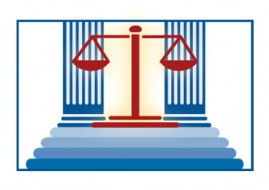New Perspective: Revisiting “Cohen v. Lord Day & Lord”
By Ronald C. Minkoff [Originally published in NYPRR ]
When I was in high school, a teacher showed my class a picture — one I am sure many readers have also seen. Viewed from one perspective, the picture showed a young, well-dressed woman; viewed from another angle, it showed an old crone. Many in the class had trouble seeing the second image after focusing on the first. The teacher used the picture to demonstrate how difficult it often is to view even simple problems from differing perspectives — especially after you have fixed on a particular point of view.
The same can be said about the analysis of so-called “no compensation for competition” agreements among lawyers, i.e., restrictive covenants that impose financial penalties on law firm members who withdraw from, and then compete with, their firm (note: the term “members” includes both partners and shareholder-members of professional corporations). Twelve years ago, in Cohen v. Lord Day & Lord (hereafter, Cohen) [75 N.Y.2d 95, 551 N.Y.S.2d 157 (1989)], the New York Court of Appeals ruled that these agreements violate both public policy and the New York Code of Professional Responsibility (Code) — specifically, DR 2-108(A) — because they impair the ability of members of the public to obtain counsel of their choice. In doing so, the Court adopted the perspective of the departing member, who might be disinclined, because of the financial penalty, from continuing to serve clients of the former firm, thus depriving those clients of the lawyer of their choice. The court has explicitly reiterated this view at least once since then [see, Denberg v. Parker Chapin Flateau & Kimpl, 82 N.Y.2d 375, 604 N.Y.S.2d 900 (1993)]. Cohen is now the accepted law of this State. [See, Simon’s New York Code of Professional Responsibility Annotated, 261-63 (2002).] Courts in many other jurisdictions, interpreting DR 2-108(A) or its Model Rule analogue, MR 5.6(a), have reached the same result.
When, however, the perspective is switched — when the problem is analyzed from the standpoint of the law firm, not the departing member — it becomes clear to me that the Cohen court reached the wrong result. Indeed, Cohen gives lawyers a special exemption from restrictive covenants, an exemption enjoyed by no other profession in New York. This exemption is not supported by the Code, ignores the realities of modern law practice, and flies in the face of common sense.
Law for Non-Lawyers
To understand where Cohen went wrong, we must start with the basic New York rules enforcing restrictive covenants against non-lawyer professionals. Although recognizing that these covenants both restrict competition and impair the professional’s ability to change jobs, courts will generally enforce them “where a mutuality of obligation is bargained for by the parties.” [Post v. Merrill, Lynch, Pierce, Fenner & Smith, Inc., 48 N.Y.2d 84, 89; 421 N.Y.S.2d 847, 849 (1979).]
Indeed, the Court of Appeals has noted that “the modern trend in the case law seems to be in favor of according such covenants full effect when they are not unduly burdensome…” [Mohawk Maintenance Co., Inc. v. Kessler, 52 N.Y.2d 276, 284, 437 N.Y.S.2d 646, 650 (1981)]. This is especially true when the departing professional’s job function may be described as “unique” within the organization. [See, e.g., Maltby v. Harlow Meyer Savage, Inc., 166 Misc. 2d 481, 485-86; 633 N.Y.S.2d 926, 929 (Sup. Ct. N.Y. Co. 1995), enforcing a restrictive covenant against a securities trader.]
This rule is applied across the board, to all non-lawyer professionals — and especially physicians — as long as “such covenants are reasonably limited temporally and geographically and, without being harmful to the public or unduly burdensome, serve the acceptable purpose of protecting the former employer or associate from unfair competition.” [Rifkinson-Mann v. Kassoff, 226 A.D.2d 517, 641; N.Y.S.2d 102, 103 (2d Dept. 1996); see, Gelder Medical Group v. Webber, 41 N.Y.2d 680, 683; 394 N.Y.S.2d 867, 870 (1977).] In Gelder, the court said, “Covenants restricting a professional, and in particular a physician, from competing with a former employee or associate are common and generally acceptable” (emphasis added). [See, also, Gismondi, Paglia, Sherling, M.D., P.C. v. Franco, 104 F.Supp.2d 223, 231–33 (S.D.N.Y. 2000), enforcing geographic restrictions against a physician fired for cause.]
These rules are consistent with the “employee choice” doctrine articulated almost 50 years ago in Kristt v. Whalen [4 A.D.2d 195, 199; 164 N.Y.S.2d 239, 243 (1st Dept. 1957), aff’d, 5 N.Y.2d 807; 181 N.Y.S.2d 205 (1958)]. There, the First Department enforced a restrictive covenant which stated that beneficiaries of a trust owning a publishing business would forfeit their entire beneficial interest if they competed with the business and made clear that the prohibition did not unduly restrict the beneficiaries’ ability to move to other jobs:
“It is no unreasonable restriction of the liberty of a man to earn his living if he may be relieved of the restriction by forfeiting a contract right or by adhering to the provisions of a contract.”
That rule is even more well-established among partners in non-lawyer enterprises. [See, e.g., Lanier v. Bowdoin, 282 N.Y. 32, 38 (1939).] The Lanier court said, “The partners of a general or limited partnership, as between themselves, may include in the Partnership articles any agreement they wish concerning the sharing of profits and losses, priorities of distribution on winding up of the partnership affairs or other matters.”
Law for Lawyers
Cohen exempted lawyers from these general rules. In Cohen, the plaintiff withdrew after 20 years as a partner at Lord Day & Lord. He had earlier signed a partnership agreement which entitled withdrawing partners to receive, in lieu of their share of unpaid receivables, a three year payout based on a set formula. The agreement, however, made clear that if a withdrawing partner “continues to practice law in any state or other jurisdiction in which the Partnership maintains an office,” the right to this payment was forfeited.
Cohen sued to have this restriction declared void. The Court agreed, holding that “while the provision in question does not expressly or completely prohibit a withdrawing partner from engaging in the practice of law, the significant monetary penalty it exacts, if the withdrawing partner practices competitively with the former firm, constitutes an impermissible restriction in the practice of law.” [Cohen, 75 N.Y.2d at 98.] The court relied explicitly on DR 2-108(A), which states:
“A lawyer shall not be party to or participate in a partnership or employment agreement with another lawyer that restricts the right of a lawyer to practice law after the termination of a relationship created by the agreement, except as a condition to payment of retirement benefits.”
The court held that this rule prohibited the imposition of any financial restraint or disincentive on the departing partner’s ability to practice law. “If financial penalties were not ‘restraints’ within the meaning of the rule, there would be no need to exempt the specific category of financial arrangements dealing with retirement.” The court concluded that voiding the financial penalty accomplished what it viewed as DR 2-108(A)’s principal purpose: to “ensure that the public has the choice of counsel.”
The Cohen holding makes sense from the perspective of the departing partner. It is undoubtedly true that a restrictive “no compensation for competition” clause will discourage a departing lawyer from continuing to serve her former firm’s clients, which may result in depriving those clients of her services. But when we flip the perspective and view the matter from the side of the jilted law firm, an entirely different picture emerges.
To understand this, we cite an example used by Professor Stephen Gillers. [See, Gillers, “The High Cost of an Ethical Bar,” American Lawyer (July–Aug. 1998).] Imagine a law firm partnership agreement which gives lawyers who leave after 20 years their capital plus an additional share of the firm’s future income, but only if they do not compete with the firm for one year. Jones heads the firm’s intellectual property group. On his 21 anniversary at the firm, he departs for the IP group of a competitor, taking several partners and three large clients with him. When the firm tries to enforce the “no compensation for competition” clause, Jones sues.
Under Cohen, Jones would prevail. But is this fair? From the firm’s perspective, clearly not. The firm has spent 20 years training Jones and investing in the growth of his practice; for many of those early years, the financial return probably did not match the investment. Moreover, Jones was a party to the “no compensation for competition” clause, and has benefited several times from its application to others. Why should he, a knowledgeable lawyer who presumably knew the Code when he signed the agreement, be allowed to walk away from the contract now? Voiding the covenant deprives the firm of the ability to protect itself economically: the mass departure which Jones orchestrated has impaired its ability to serve its remaining IP partners, and will cost the firm a fortune in headhunter fees and other expenses to re-build the department.
“That is all too bad,” Jones (and Cohen adherents) may argue, “but the purpose here is to protect clients, and it would violate public policy to allow the firm to prohibit me from taking on any client that wants me.” But what if two of the three IP clients Jones seeks to move with him have conflicts with other clients of the new firm and Jones is unable to take them? How are those clients being helped by voiding the restrictive covenant and encouraging Jones to move?
Even if there is no conflict, the public is not protected by allowing Jones to move freely to another firm. Jones was not forced to leave his firm; he chose to do so almost certainly because he could get a better deal elsewhere. He could have continued to serve the clients at the original firm, probably better and more cheaply than at the new place. If he were really concerned about the clients, he would have swallowed whatever dissatisfaction he had at the original firm — financial or otherwise — and abided by his contract.
In short, a “no compensation for competition” provision is just one economic factor among many that Jones — like any other professional — should have to consider in deciding whether to switch firms. A decision voiding that provision to facilitate Jones’ move may serve Jones’ personal interests, but its impact on the interests of specific clients or the public at large may not be equally beneficial.
But Cohen adherents will huff in response, “Isn’t your problem really with DR 2-108(A)? That rule certainly prohibits placing geographic restrictions on departing lawyers and, as the Cohen court showed, even bars financial disincentives.” But that is only partly true. The original Comments to DR 2-108(A) suggest that the provision was meant to codify certain ABA ethics opinions, and those opinions in turn suggest that DR 2-108(A)’s restriction against “a partnership or employment agreement with another lawyer that restricts the right of a lawyer to practice law” (emphasis added) was meant to bar only two types of agreements: those that prohibit practice in a geographic area entirely, and those in which splintering law firms divide or traffic in clients. [See, American Bar Foundation, Annotated Code of Professional Responsibility, 115-16 (ABF 1979), citing ABA Formal Opinion 300 (1961) (covenant barring lawyer from practicing in a particular geographic region for a particular period is prohibited, in part because “it led the lawyers to barter in clients”) and Informal Opinion 1072 (1968) (prohibiting same restriction in partnership agreements). Formal Opinion 300 used the word “restriction” to mean “prohibition.”] There is nothing in the history of the Rule that would stretch this language to cover provisions intended to discourage — but not bar — lawyers from leaving their firms.
For all these reasons, courts in other key jurisdictions, including California and Massachusetts, have rejected Cohen’s categorical rule barring all “no compensation for competition” clauses. Thus, four years after Cohen, the California Supreme Court in Howard v. Babcock [6 Cal.4th 409, 863 P.2d 150 (1993)], enforced a similar clause, stating, “we can see no justification for treating partners in law firms differently in this respect from partners in other businesses and professions.” [Id. at 421, 863 P.2d at 157.] Applying California Ethics Rule 1-500, which in pertinent part is identical to DR 2-108(A), the Court interpreted the word “restricts” narrowly:
“An agreement that assesses a reasonable cost against a partner who chooses to compete with his or her former partners does not restrict the practice of law. Rather, it attaches an economic consequence to a departing partner’s unrestricted choice to pursue a particular kind of practice.” [Id. at 419, 863 P.2d at 156.]
Indeed, the court noted that the financial disincentive created by the agreement “would not necessarily discourage withdrawing partners from continuing to represent clients who choose to employ them. Unless the penalty was unreasonable, it is more likely that the agreement would operate in the nature of a tax on taking the former firm’s clients — a tax that is not unreasonable, considering the financial burden the partners’ competitive departure may impose on the former firm.” [Id. at 423, 863 P.2d at 159.]
Thus, rather than prohibit all “no compensation for competition” agreements, the Howard court barred only those that contain “unreasonable” penalties and restrictions. The financial protection of the firm remains paramount.
In Pettingell v. Morrison, Mahoney & Miller [426 Mass. 253, 687 N.E.2d 1237 (1997)], the Massachusetts Supreme Judicial Court upheld a “no compensation for competition” clause, but the court pointed out that “there may be situations in which, although a forfeiture is inappropriate, some reasonable recognition of a law firm’s loss due to the departure of a partner should be recognized.” The court cited as an example a departing partner who leaves “the surviving partners with onerous partnership debts, threatening the financial integrity of the firm.”
Thus, we have come full circle, back to the clashing perspectives we cited at the beginning. In New York, we look at “no compensation for competition” provisions from the standpoint of the departing lawyer, while in California, those provisions are viewed from the standpoint of the jilted law firm. But unlike the students in my high school class, unable to see both the young woman and the old crone, the New York Court of Appeals has shown some signs of flexibility. Seven years ago, in Hackett v. Milbank, Tweed, Hadley & McCloy [86 N.Y.2d 146, 630 N.Y.S.2d 274 (1995)], the court upheld an arbitration award which enforced a restrictive covenant that reduced a departing partner’s “withdrawal payment” dollar-for-dollar by any post-withdrawal income in excess of $100,000. Although the court focused mostly on its limited jurisdiction to review an arbitrator’s award, it did note that because the provision covered all departing partners, “no financial disincentive specifically devolves on partners withdrawing to compete with Milbank Tweed.” [Id. at 156, 630 N.Y.S.2d at 280.] And that same year, in Graubard Mollen Dannett & Horowitz v. Moskowitz [86 N.Y.2d 112, 629 N.Y.S.2d 1009 (1995)], the court interpreted a partnership agreement clause prohibiting departing partners from “do[ing] anything to impair the firm’s relationships with existing clients” as imposing a “best efforts” requirement, not an absolute bar. [Id. at 120, 629 N.Y.S2d at 1014.]
Since then, the court has not spoken. But while Hackett and Graubard Mollen seem to chip away at Cohen’s blanket rule, they hardly overturn it. The court should now complete the cycle of rejection. This will only place lawyers on the same footing as other professionals and comport with the realities of the competitive legal marketplace.
Ronald C. Minkoff is a member of Frankfurt Garbus Kurnit Klein & Selz, PC., practicing commercial litigation and the law of lawyering. He is an Adjunct Professor of Professional Responsibility at Brooklyn Law School.
DISCLAIMER: This article provides general coverage of its subject area and is presented to the reader for informational purposes only with the understanding that the laws governing legal ethics and professional responsibility are always changing. The information in this article is not a substitute for legal advice and may not be suitable in a particular situation. Consult your attorney for legal advice. New York Legal Ethics Reporter provides this article with the understanding that neither New York Legal Ethics Reporter LLC, nor Frankfurt Kurnit Klein & Selz, nor Hofstra University, nor their representatives, nor any of the authors are engaged herein in rendering legal advice. New York Legal Ethics Reporter LLC, Frankfurt Kurnit Klein & Selz, Hofstra University, their representatives, and the authors shall not be liable for any damages resulting from any error, inaccuracy, or omission.
Related Posts
« Letters of Engagement Are Now Mandatory Colorado Claims Jurisdiction Over New York Malpractice »













